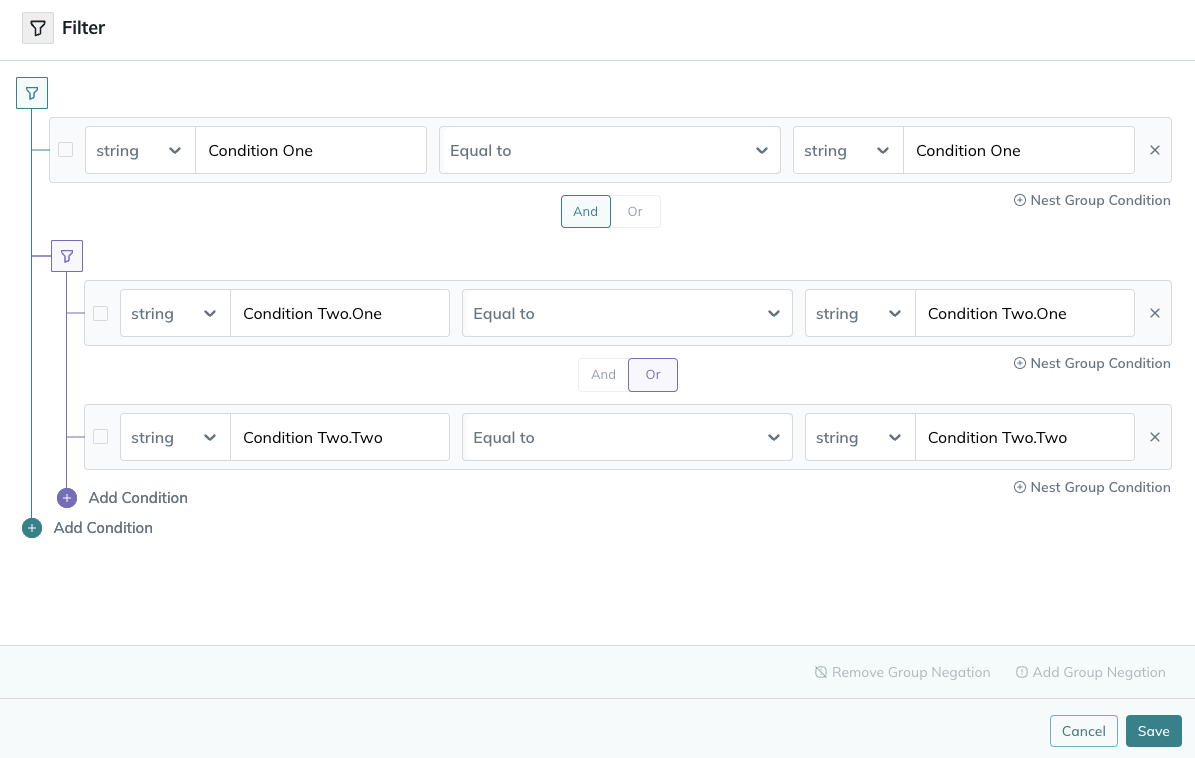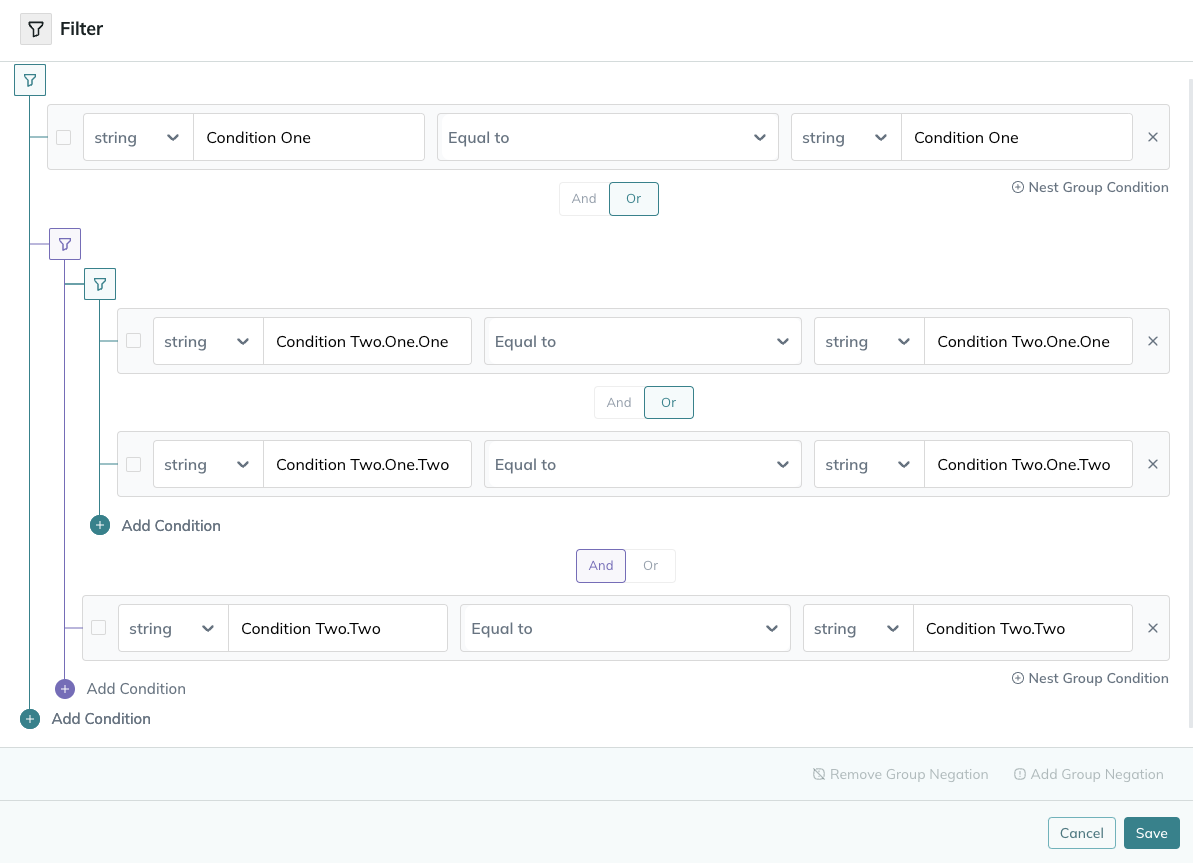
Filter tool
What is Filter?
Apply conditional logic to an Integration in order to direct data flow or to allow / restrict certain types of data flowing through the Integration.Logical Operators
AND
The AND logical operator combines two or more single filter expressions into one filter condition. Each single expression must evaluate as truthy in order for the combined filter condition to pass.
Filter AND logical operator
OR
The OR logical operator combines two or more single filter expressions into one filter condition. If any of the single expression evaluates as truthy the filter condition will pass.
Filter OR logical operator
Comparison Operators
Comparison operators define how the expression will be evaluated.Greater than
“Greater than” is a comparison operator used to show that one number or quantity is larger than another. For example, an Integration requirement might be to filter all Products whereby if the Product price is greater than 10 the filter should pass.Greater than or equal to
“Greater than or equal to” is a comparison operator used to show that one number or quantity is either larger than or equal to another. For example, an Integration requirement might be to filter all Products whereby if the Product price is greater than or equal to 10 the filter should pass.Less than
“Less than” is a comparison operator used to show that one number or quantity is smaller than another. For example, an Integration requirement might be to filter all Products whereby if the Product price is less than 10 the filter should pass.Less than or equal to
“Less than or equal to” is a comparison operator used to show that one number or quantity is smaller than or equal to another. For example, an Integration requirement might be to filter all Products whereby if the Product price is less than 10 the filter should pass.Equal to
“Equal to” is a comparison operator used to indicate that two values or expressions are the same in value.Not Equal to
“Not Equal to” is a comparison operator used to indicate that two values or expressions are not the same in value.Exists
“Exists” is a comparison operator used to determine if a value exists in another set of valuesContains
“Contains” is a comparison operator used to determine if a value exists in another set of valuesRegular Expression
A regular expression (or regex) is a sequence of characters that defines a search pattern. It’s commonly used for pattern matching within strings, such as checking whether a string matches a specific format or finding parts of text that match certain criteria.Using Selectors in Filter
Selectors can be used to access data from any previous step in the workflow. Opening up the possibilites for any kind of business logic to be applied to the data flowing through the Integration.
The Filter selects from a previous steps operation
Creating nested Filter conditions
For more complex filter requirements nested conditions can be implemented.
The Filter will pass data through if both Condition.One passes AND if Condition.Two.One OR Condition.Two.Two passes

The Filter will pass data through if either Condition.One passes OR if Condition.Two.One AND Condition.Two.Two passes
Using negation
The Filter allows an expression to be negated should this fit the logical requirements. Either single expressions or grouped expressions can be negated.
The Filter negates Condition.One so in this context the expression would evaluate if it is 'Not Equal to'